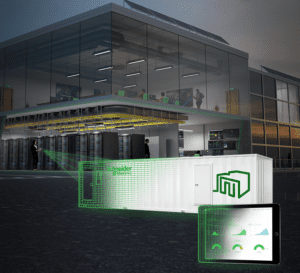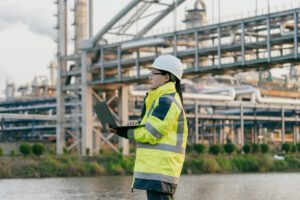Due to the rise in greenhouse gas emissions, the call for decarbonization has never been as urgent as it is now. To understand the increasing criticality of decarbonization, we can start by understanding its basic definition.
What is decarbonization?
‘Decarbonization’ refers to reducing ‘carbon intensity’ and lowering the level of greenhouse gas emissions produced by a multitude of sources. It involves decarbonizing energy and reducing CO2 levels per unit of electricity generated.
What is an example of decarbonization?
Decarbonization reduces carbon dioxide emissions, often through sustainable energy sources and technologies, to combat climate change. An example of this is switching from coal-fired power plants to renewable energy sources like wind or solar power.
The significance and goals of decarbonization
The importance of decarbonization lies in its ability to tackle the fundamental driver of climate change: the excessive emission of carbon dioxide and other greenhouse gases. These greenhouse gas emissions trap heat, causing global temperature rise, sea-level elevation, extreme weather, and ecological imbalances. Decarbonization is crucial to mitigate severe climate effects, curbing temperature growth, and fostering a sustainable, resilient world.
Goals of decarbonization
The primary goal of decarbonization is to achieve a state of net-zero emissions, where the amount of CO2 released into the atmosphere is balanced by its removal through measures like reforestation and carbon capture technologies. This ambitious goal is in accordance with global accords like the Paris Agreement. The goal is to restrict the increase in global temperatures to below 2 degrees Celsius compared to levels before industrialization. To accomplish this, countries and industries set targets to reduce emissions from energy production, transportation, agriculture, manufacturing, and other sectors.
Strategies for decarbonization
- Transition to renewable energy: Shifting from fossil fuels to renewable energy sources like solar, wind, and hydroelectric power is central to decarbonization. Renewable energy helps generate electricity without emitting greenhouse gases, reducing reliance on carbon-intensive sources.
- Energy efficiency: Improving energy efficiency in buildings, transportation, and industries reduces overall energy demand and associated emissions. Upgrading infrastructure and using energy-efficient technologies play a crucial role.
- Electrification: Replacing fossil fuels with clean electricity in traditionally fossil fuel-dependent sectors like transportation and heating can lead to substantial emissions reduction.
- Carbon Capture and Storage (CCS): CCS technologies capture CO2 emissions from industrial processes or power plants and store them underground, preventing their release into the atmosphere.
- Afforestation and reforestation: Planting trees and restoring forests enhance carbon sequestration, removing CO2 from the air.
- Circular economy: Adopting circular economy principles minimizes waste and promotes recycling, reducing the need for energy-intensive production processes.
- Policy and regulation: Governments can play a crucial role by implementing policies, regulations, and incentives that promote decarbonization and encourage sustainable practices.
- Research and innovation: Advancements in technology, such as carbon capture and direct air capture, are essential for achieving aggressive decarbonization goals.
Decarbonization represents a fundamental shift in how societies produce and consume energy and resources. It requires coordinated efforts from governments, industries, communities, and individuals to transition toward a low-carbon future. By embracing decarbonization strategies, we can mitigate the impacts of climate change and create a more sustainable planet for current and future generations.

Impact on future generations
As urban areas become increasingly congested and populated, the concept of decarbonization presents a potential solution for a healthier and more sustainable lifestyle.
For future generations, decarbonization could offer numerous benefits. Access to cleaner air, ample green spaces, and a closer connection to nature can contribute to improved physical and mental well-being. Reduced exposure to noise pollution can lead to lower stress levels and an enhanced quality of life.
Decarbonization process: General framework of how decarbonization works
After understanding what is decarbonization, one might think about where to start from? How to decarbonize? Are there any set decarbonization processes? Hang in there! We’ll delve into the details below.
Step 1: Know your potential and baseline
Knowing about your current status on the decarbonization journey would help you set achievable goals and enable fast decision-making by allowing you to get details about where and how to act. You can start with your decarbonization process by creating baseline emissions by source.
To adopt a well-strategized decarbonization process, you can use data solutions such as software to curate and analyze data. This will make it easy for you to use the data and share it with your stakeholders. Keeping the stakeholders in the loop is advisable to ensure your decarbonization ambitions align with your organization’s inclination to change.
Step 2: Create and announce targets
After analyzing and knowing your goals, it’s time to announce them.
Our research shows that announcing goals pushes businesses to set ambitious goals, encourages them to achieve their goals faster, and boosts success.
At Schneider Electric, our commitment to achieving our sustainability objectives over the years has made us one of the world’s leading sustainable companies.
Step 3: Deploy decarbonization programs and strategies
Due to the varying nature of industries, different decarbonization strategies need to be worked out for different industries to achieve an energy-efficient and decarbonized economy. After all, there’s no one-size-fits-all approach.
With the advancement in technology, for most industries, carbon footprint reduction would involve a unique combination of infrastructure upgrades, data management, digital solutions, etc.
The decarbonization process would thus result in:
- Energy management with performance tracking and analytics solutions
- Resource optimization with advanced building management systems, energy performance contracting, etc.
- Low carbon replacement with alternative fuels, electrification, renewable energy, etc.
- Supply chain neutrality with lifecycle assessments, sustainable procurement practices, etc.
Following a dedicated decarbonization process has a wider scope than just decreasing emissions – it can help your business achieve efficiency, resilience, competitive advantage and much more.
Step 4: Monitor and adjust
Businesses across all verticals might experience both predictable and unpredictable situations on their way to achieving decarbonization objectives, such as, the requirement of additional human capital, reallocation of finances, etc., involving a constant adjustment in your plan.
Therefore, to keep up with the trends, it is imperative to monitor and analyze changes in the business’s internal and external environment. Besides, it is beneficial to keep communicating and conducting discussions throughout the supply chain about the decarbonization processes, strategies, and technologies; this would help achieve federal and corporate goals.
How can decarbonization be accelerated with digitization?
The world’s global energy landscape will continue to change in the coming years, as it has changed over the previous 100 years or so. Digitization, artificial intelligence, and the Internet of Things will lead the way to a decarbonized economy. These technologies have made power generating assets efficient, electric grids more resilient and secure, etc. There would be three key enablers:
1. Transparency of consumption
The Internet of Things (IoT) allow businesses to collect and analyze resource and energy data, while also provide insights into buildings, systems, and plants. With this, electricity and other resources do not just remain commodities that are simply delivered and used when required. Rather, such solutions can measure what we use and control what we measure, matching consumption to actual targets, forecasts, grid performance and much more. And this would mark the start of the decarbonization process.
2. Analytics and artificial intelligence
Artificial intelligence (AI) has the potential to aid organizations in their decarbonization journey. Its capacity to provide comprehensive insights into many elements of a company’s carbon footprint as well as fast cost-cutting victories is a potential path to speeding the decarbonization process and sustainable transformation.
Moreover, large organizations are in an exceptionally advantageous position to profit from AI’s capabilities since their size allows them access to massive data sets, a critical success factor for adopting AI.
3. Digital ecosystem collaboration
As it is difficult to combat climate change alone, finding the appropriate technology partner is frequently the quickest, simplest, and most lucrative method to meet decarbonization targets. This is where digital ecosystems may have a significant impact.
Exactly where digital ecosystems enable end-users, technology suppliers, and integrators to collaborate and exchange data for gaining new insights, develop new solutions, and address efficiency and sustainability issues.
How can decarbonization be accelerated in specific industries?
Accelerating decarbonization in specific industries involves utilizing renewable energy sources, enhancing energy efficiency, and implementing carbon capture technologies. Moreover, transitioning to electric and hydrogen-powered machinery, enhancing waste management, and promoting sustainable practices through regulatory incentives can significantly reduce carbon footprints. Corporate commitments further drive industries toward a greener and more sustainable future.
The way forward
As we can observe extreme climate changes, it is important to make changes in energy sources and patterns of energy consumption. Taking cue to the rising criticality, the world is transitioning to renewable energy sources from the use of fossil fuels. Nonetheless, to make the decarbonized economy a reality, businesses, government and citizens need to take up the challenge of transitioning in transformative ways.



